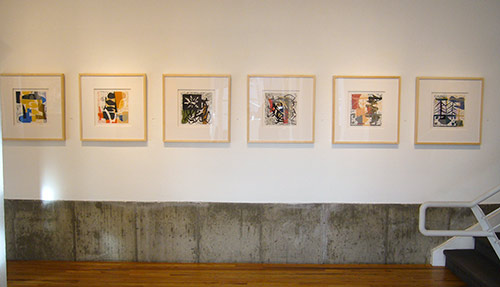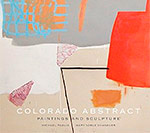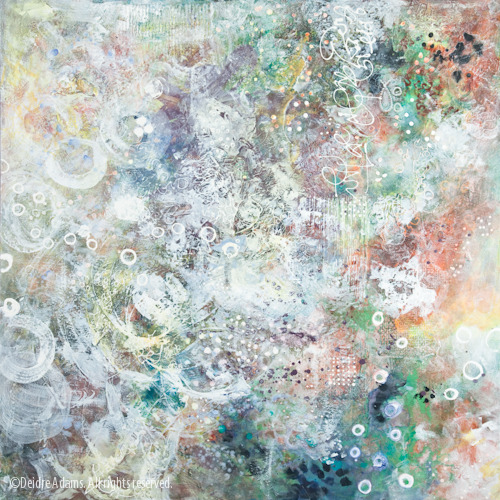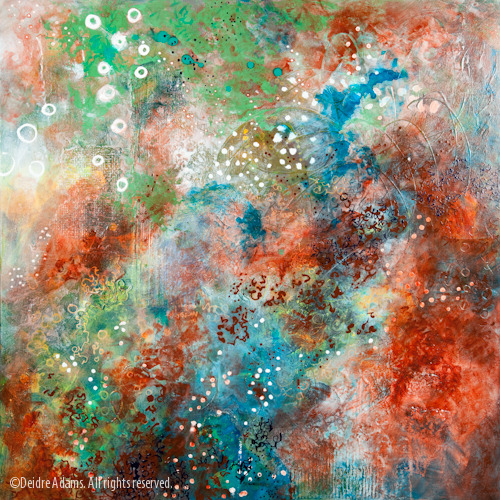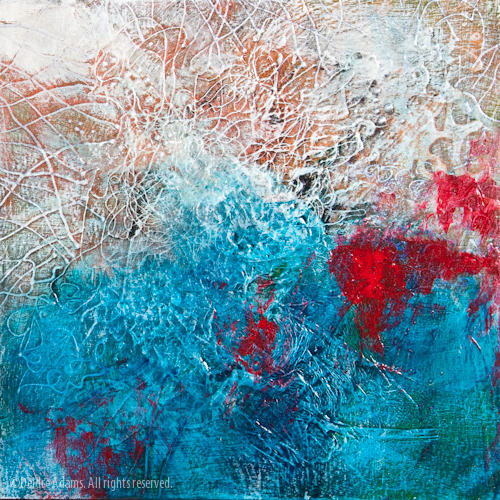Amy Metier at William Havu Gallery
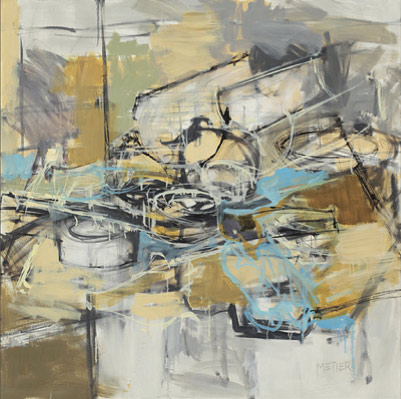 Whistle, 48 x 48 inches, oil on canvas, ©2010 Amy Metier.
Whistle, 48 x 48 inches, oil on canvas, ©2010 Amy Metier.
Palimpsest
Amy Metier at William Havu Gallery through April 10, 2010
1040 Cherokee St.
Denver, Colorado
In her third solo exhibition at the William Havu Gallery, Metier fills the space with exuberant abstractions of objects from her studio, other artist’s studios and recent travels. These shapes are drawn with fluid, gestural lines, wiped away or partially painted over, and redrawn again, inviting the viewer to engage in the painting.¹
I was excited to see this show last week, because Amy is a professor at Metro, and she was the instructor for 3 out of the 5 painting classes I took there. She’s been exhibiting her work nationally and internationally since the mid-1980s, but is especially well known and loved in the Denver area. This is her third solo at Havu. I had seen some of her work in person, and more of it online and in Colorado Abstract, a book by local art critics Michael Paglia and Mary Voelz Chandler published last year. So I was interested to see the new work, some of which is done in new, more muted color palettes. I admire Amy’s fearless approach to painting, with free-spirited brushstrokes which give each piece a lively energy and a sense of rhythm. Placement of colors and shapes seems random, yet logical in the sense that balance is achieved in an organic way. Expressive linework animates the compositions and ties them together.
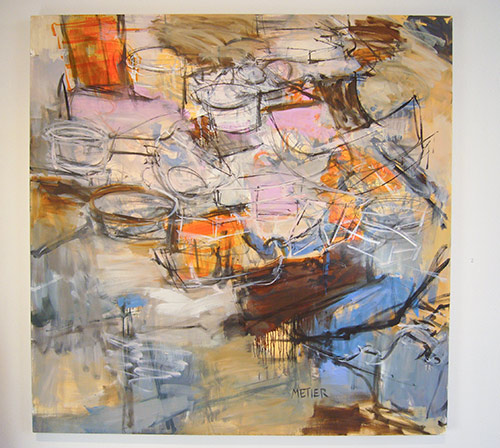 On Saturday, 60 x 60 inches, oil on canvas, ©2010 Amy Metier
On Saturday, 60 x 60 inches, oil on canvas, ©2010 Amy Metier
Amy sometimes uses a photo as a starting point, but it’s difficult or impossible to tell what the subject was originally, leaving the viewer free to make a personal interpretation and connection with the work. As many abstract painters do, she maintains a balance between chaos and harmony, and the unexpected color combinations keep the work fresh and exciting.
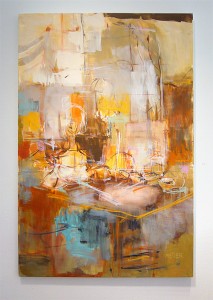 In the Studio, 72 x 48 inches, oil on canvas, ©2010 Amy Metier
In the Studio, 72 x 48 inches, oil on canvas, ©2010 Amy Metier
Metier is fully engaged in the push and pull between the representational and the way in which a shape informs abstraction. Her paintings, studies, and works on paper demonstrate an ease in resolving what she has called “that tension between wanting to create an image and not wanting to create an image.”²
The William Havu Gallery is a beautiful space, especially in the late afternoon with the warm golden glow of the sun illuminating the paintings.
Amy also does lovely monotypes and linocuts. I wasn’t able to get any good photos because of the reflections from the glass, but here’s an overall shot of selections from her Harrison Suite, linocut with chine collé.
You can see more of Amy Metier’s work here and here.


